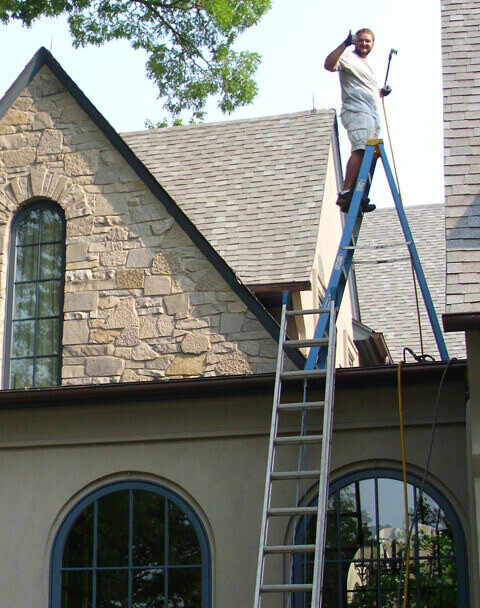
FAQ - Power Washing / Soft Washing
Types of buildup
There are two main classifications of growth that can wreak havoc on fences, concrete, roofs and other exterior surfaces of a home or building’s structure – fungus and bacteria. Below are some details of each type.
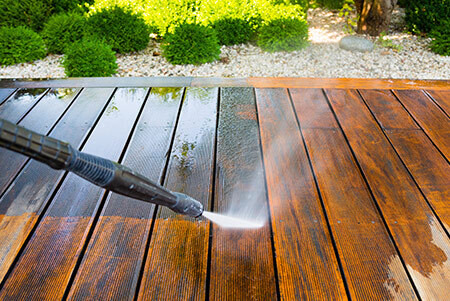
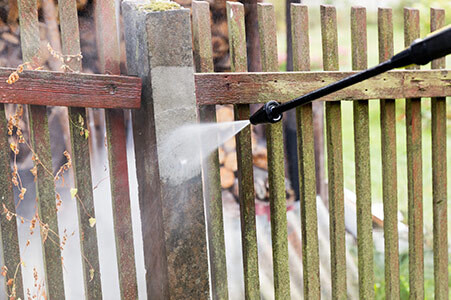
Moss
Scientific name - Bryophyta
Classification - Fungus
Mosses are small flowerless plants that typically grow in dense green clumps or mats, often in damp or shady locations. The individual plants are usually composed of simple leaves that are generally only one cell thick, attached to a stem that may be branched or unbranched and has only a limited role in conducting water and nutrients.

Lichen
Scientific name - Flavoparmelia caperata
Classification - Fungus
Description - a medium to large foliose lichen that has a very distinctive pale yellow green upper cortex when dry. The rounded lobes, measuring 3–8 mm (0.1–0.3 in) wide, usually have patches of granular soredia arising from pustules. The lobes of the thallus may be smooth, but quite often have a wrinkled appearance especially in older specimens. The lower surface is black except for a brown margin.


Algae
Scientific name - Gloeocapsa magma
Classification - Bacteria
Description - Gloeocapsa magma is a photosynthetic cyanobacteria consisting of a small group of algae spores. It is responsible for the black/dark green stains that form on roofs. These black stains are the bacteria themselves in mass amounts covering the surface of the roof shingles. Gloeocapsa magma has been around historically and up through the present, except only in the recent decades has it been considered to have detrimental effects worthy of prevention. This cyanobacteria causes substantial destruction revolving around shingle decay and loss of reflective power. Over time, Gloeocapsa magma begins to break down the contents of the shingles by feeding off of the limestone granules embedded in the shingles and this decreases the roof’s ability to reflect ultra-violet rays of light. Also, the quality of the shingles slowly diminishes. They have been found to curl up at the corners as well as form raised humps on the surface. This ultimately can result is broken or disintegrated shingles. In the long run, this has been known to increase air conditioning bills and lead to more frequent roof repair and reconstruction. The main preventative strategy known to date is frequent (annual) roof cleanings using roof algae cleaners. Installing copper or zinc strips along the roof border also inhibits bacterial growth by killing off new colony formation.

Mildew
Classification - Fungus
Description - Mildew is a form of fungus. It is distinguished from its closely related counterpart, mold (British English: mold), largely by its color: molds appear in shades of black, blue, red, and green, whereas mildew is white. It appears as a thin, superficial growth consisting of minute hypha (fungal filaments) produced especially on living plants or organic matter such as wood, paper or leather. Both mold and mildew produce distinct offensive odors, and both have been identified as the cause of certain human ailments.
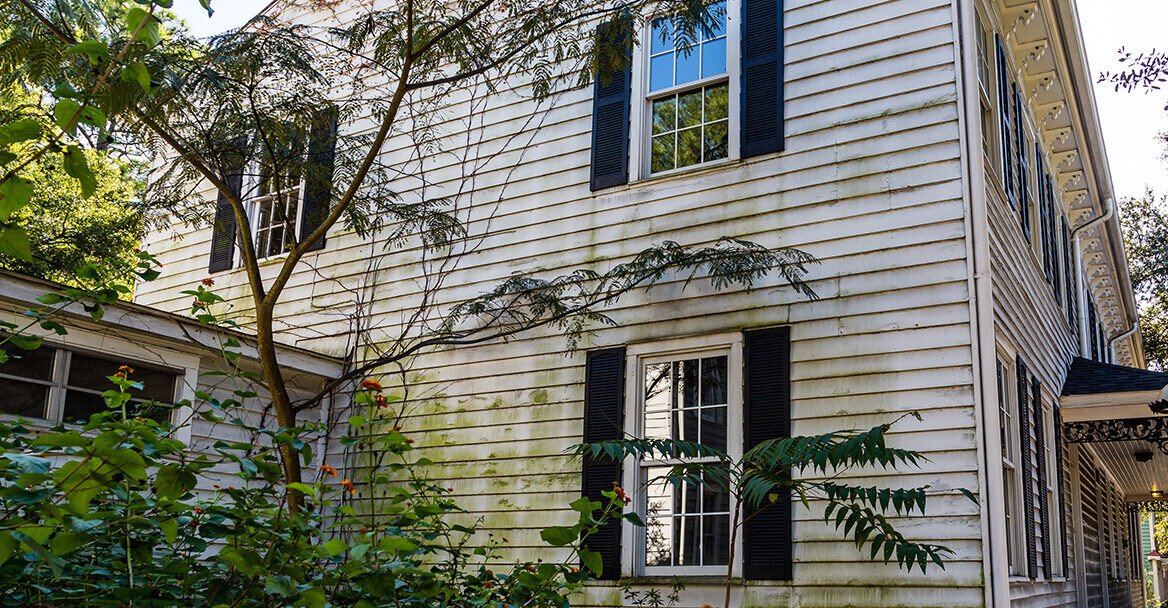
Mold
Classification - Fungus
Description – Molds cause biodegradation of natural materials, which can be unwanted when it becomes food spoilage or damage to property. They also play important roles in biotechnology and food science in the production of various foods, beverages, antibiotics, pharmaceuticals and enzymes. Some diseases of animals and humans can be caused by certain molds: disease may result from allergic sensitivity to mold spores, from growth of pathogenic molds within the body, or from the effects of ingested or inhaled toxic compounds (mycotoxins) produced by molds.
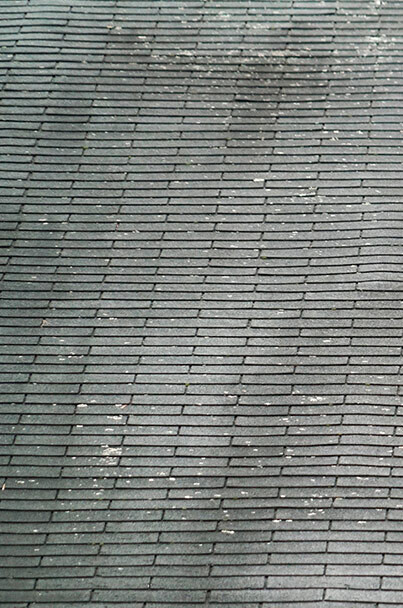
Artillery Fungus
Scientific name - Sphaerobolus
Classification - Fungus
Description - Commonly known as the "shotgun fungus" or "cannonball fungus", species discharge their spores with explosive force. Discharged spore sacs are sticky and have a tendency to strongly adhere to whatever surface they encounter, making them a nuisance to homeowners, pressure washing contractors, landscape mulch producers and insurance companies. Species have a cosmopolitan distribution and are usually found on dung, decaying wood (such as landscaping mulch), or vegetative litter.
How to avoid environmental buildup and the health issues associated with it
Exterior environmental buildup moves around through air, believe it or not. In order to control exterior buildup, these microbes must be safely eliminated through a chemical treatment. If these microbes are not eradicated, not only will they continue to grow and further infest whatever they have attached to, but they will also impose health concerns. Mold, mildew, and algae can, and will cause serious respiratory issues if inhaled on a frequent basis…
A five-year study conducted by researchers at the University of Cincinnati and published in Pediatric Allergy and Immunology in June 2006 found that children exposed to airborne spores as babies were at increased risk of developing multiple allergies to mold, pollen, dust mites, pet dander and foods in later life. Common symptoms of mold exposure include respiratory problems such as wheezing and asthma attacks, nasal and sinus congestion, as well as eye, nose, throat and skin irritation. Mold can also affect the central nervous system, causing headaches, mood changes and memory loss. Infants and children, people with compromised immune systems or pre-existing respiratory conditions, pregnant women and the elderly are most vulnerable to adverse reactions.”
The easiest way to control buildup around your property is to establish routine maintenance washing. After the initial washing, your property will look outstanding, but in order to prevent the buildup from coming back, maintenance must be implemented. Not only can the airborne microbes cause health concerns, but the destructive power behind such a tiny organism is monumental. If left unattended, mold, mildew, algae, lichen, moss and other microbes will continue to grow on any organic material and/or in damp, shaded areas, completely consuming what it’s growing on, eventually leading to rot and finally total destruction. It is essential for your well-being , both financially and health-wise to be proactive when you begin to notice this type of buildup.
What is the difference between power washing, pressure washing, and soft washing?
Pressure washing – This type of cleaning takes water and increases it to various pressures to achieve better cleaning than a garden hose, brush, and soap can provide. Pressures and gallons per minute, as this is how each machine is rated, vary on the types and styles of machines. The specs on a good residential pressure washing machine should be around 3000psi (pounds per square inch of pressure) while using about 5gpm (gallons per minute). These machines are typically not found at your local hardware or home improvement store because extra caution and “know how” is needed to operate them safely.
Power washing – This is the same pressure as “pressure washing” but with very hot water. The hot water is generated by an on-board heating unit until it reaches approximately 200-300 degrees, depending on what is needed to be cleaned. Technically speaking, when water is at atmospheric pressure, water boils and turns into steam around 212 degrees Fahrenheit. When water is pressurized to high pressure, the boiling point of water increases, which in turn increases the overall temperature needed for steam. Water will need to reach 230 degrees Fahrenheit before it will become steam. At these temperatures and pressures, someone can be seriously hurt in a split second should a hose break or fitting come loose. Extreme caution is always taken when using this type of cleaning method for obvious reasons. We also do inspections on all equipment being used, so the possibility of accidents are avoided.
Soft washing – This type of cleaning is the safest, deepest, and most effective way to clean the majority of exterior finishes, depending on buildup. This cleaning process only requires 60-100psi for application of solutions and rinsing power. Soft washing is solely reliant on chemistry, not brute force to safely eliminate and/or break down buildup and easily have it rinsed away. When it comes to washing the exterior of a house or removing buildup on a roof surface, this process is actually the only cleaning process enforced by both siding and roofing institutions. Using a pressure washing or even a power washing machine, in attempt to remove any living microorganism or even airborne dust, will void any warranties with the manufacturer, cause irreversible damage seen and not seen by the naked eye, but overall doesn’t come close to offering the cleaning power and the long term benefits of really removing the buildup (commonly environmental buildup) at its root system. Pressure washing and power washing will only scalp the material off, spreading it, and making it look worse when it comes back, because it will. There is no complete remedy for environmental buildup, but the soft washing process is by far the best choice.
Property Inspection
Before starting any job, we visit each site to thoroughly inspect the property for….
- Current damage (brought up at time of bid, any needed pictures are taken for documentation)
- Areas of concern
- Size of job
- Types of buildup
- Solutions being used, will they have an environmental impact?
- Most cost-efficient way to clean while providing best results
- Safety – Do the cleaning procedures outweigh safety?
Once a thorough inspection has been done been by one of our trained staff, we will put together a proposal based on your needs and wants, with each step taken into consideration. If we were to not visit each site, areas may be forgotten or current conditions of buildup and damage may be overlooked. It is important for the property to be carefully inspected for possible safety, but most importantly, we want to offer our best pricing possible. Visiting each site allows us to determine what will be the most effective process, rather than through video or pictures.
